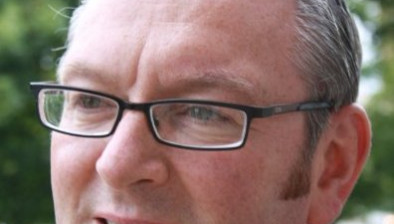Research demonstrates link between regeneration and life prospects in Glasgow

Regeneration has helped residents in one of Glasgow’s poorest areas to realise their potential to the extent that they significantly outperform the city average on two key economic measures, according to a new report.
A new study of the Gorbals area in Glasgow conducted by the Royal Town Planning Institute (RTPI) shows that after two decades of regeneration, unemployment fell by 31 per cent between 2004 and 2012 and the percentage of “income deprived” people, including those on welfare benefits, also fell by 31 per cent in the same period.
This compares significantly better than the average of Glasgow as a whole, which saw only a 16 per cent drop in unemployment and a 21 per cent drop in “income deprived” citizens between 2004 and 2012.
Janet Askew, president of the RTPI said: “We know that living in safer, cleaner and more attractive places is likely to enable individuals to become more economically active and live more fulfilling lives, and this study provides some strong evidence. In times of austerity, it is all the more important that government, developers and decision-makers keep their focus on and belief in the importance of investing in communities and regeneration.”
Pamela Ewen, convenor of RTPI Scotland, said: “Regeneration has often been measured by its benefits to an area using indicators such as house prices, number of shops and inward investment as signs of gentrification. This Gorbals study is different in that it tracks the economic fortunes of local residents. It makes a much needed case that good planning and place-making has a direct impact on the local community.”
The Gorbals is an area on the south bank of the River Clyde in the city of Glasgow, which was traditionally marked by a highly socially excluded and deprived community dating back generations.
Glasgow City Council embarked on an ambitious regeneration project in the 1990s with a wide range of public and public partners. Master-planning, competitive design tenders and community involvement led to attractive design replacing grey monotony, a mix of housing schemes with significant social housing stock has been introduced, pedestrian zones and public spaces have been improved.
Bailie Liz Cameron, executive member for jobs and the economy at Glasgow City Council, said: “This research report provides a very welcome reminder of the social and economic benefits which can be derived from good town planning. Glasgow’s Development Plan approach is increasingly focussed on place-making and spatial planning, which we believe will ensure that all new developments add value to our communities.
“The Gorbals area is an excellent example of the role town planning can play in making good places. The planning of the area has sought to repair the urban character of the Gorbals, without copying what was there before and has aspired to define new architectural possibilities within the traditional framework, and the Crown Street project was crucial in redefining perceptions of the quality of urban living that could be achieved in inner city Glasgow. The good practice established through this project continues to influence the approach to the regeneration of the area and the multi-award winning Laurieston Transformational Regeneration area – immediately to the west of the Gorbals – has built on this approach to urbanism, which has sought to create a place and add value, rather than to just build houses.”
The RTPI study, Gorbals Regeneration – Delivering Economic Value through Planning, connects the effects of regeneration to better economic outcomes for people by studying local data from the Scottish Neighbourhood Statistics.
Key findings show how the Gorbals area has seen rapid declines in unemployment and income deprivation among the local population. In particular, the Crown Street Regeneration Project which won an RTPI award, has brought the most impressive results. Unemployment (at 16 per cent) and income deprived population (at 20 per cent) in the local area are both below the Glasgow city average.
The full report is available from the RTPI Research website.








